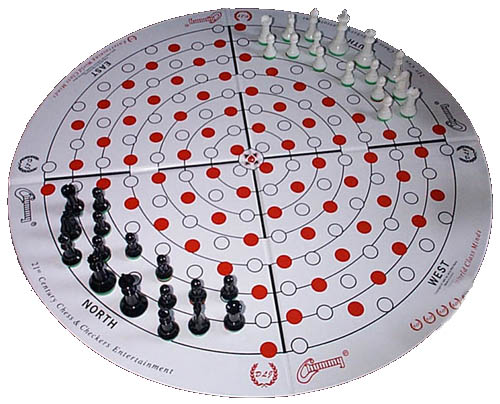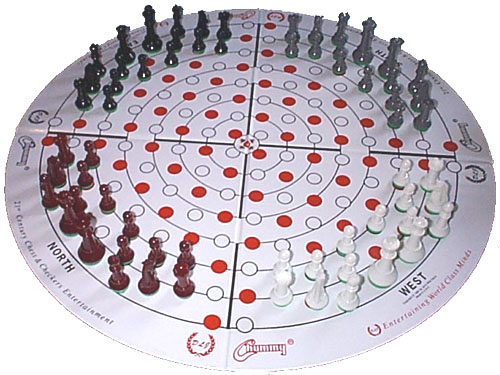



The KingThe king moves one space at a time in a horizontal, vertical, diagonal, or circular direction. It cannot hop over other pieces. The king captures by occupying the space of the hostile piece. | |
|
| |
The QueenThe queen can move vertically, horizontally, diagonally, or circularly. It moves any distance in one direction at a time. The queen cannot hop over other pieces. The queen captures by occupying the space of the hostile piece. | |
|
| |
The RookThe rook moves diagonally or circularly. It may move any distance in one direction at a time. It cannot hop over chessmen. The rook captures by occupying the space of the hostile piece. | |
|
| |
The BishopBishops move vertically, horizontally or circularly. It moves any distance in one direction at a time. The bishop must always land on the same color space from which its move began. For example if a bishop's move started from a red space, it must end on a red space. | |
|
| |
The KnightThe knight moves in an "L" shape. Two spaces in one direction, and then an additional space to the right or left. Or the knight can move one space in one direction and two additional spaces to the left or right. The knight may leap over other pieces, but cannot move circularly. | |
|
| |
The PawnPawns move in a forward vertical direction, or a forward circular direction, or a lateral circular direction. Pawns do not move backwards.One each pawn's first move, the player has the option of
moving it one or two spaces. After a pawn's first move, all
its subsequent moves are one space per turn. Pawn's capture
by diagonally moving into the space occupied by a hostile piece.
If a player's pawn reaches the king's row of the opposite opponent,
it can be exchanged for a stronger playing piece.
|

